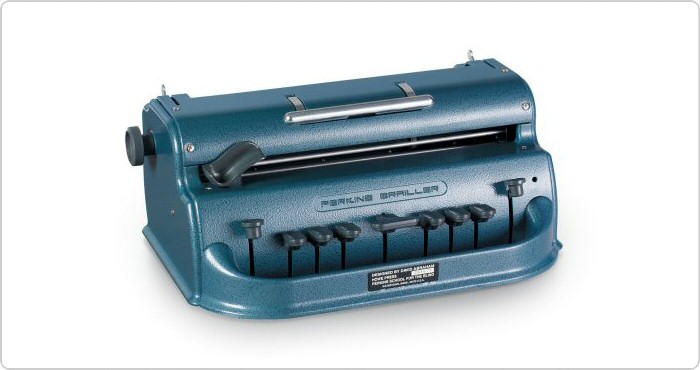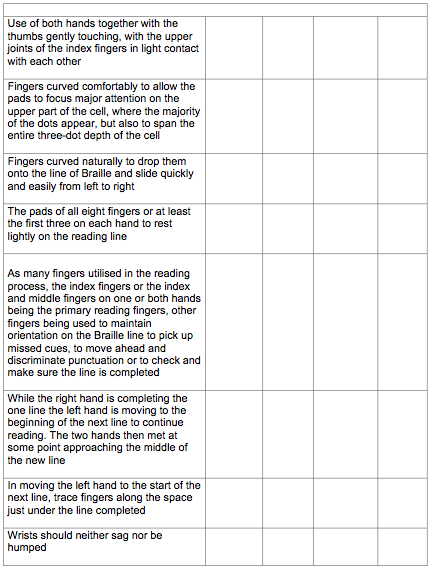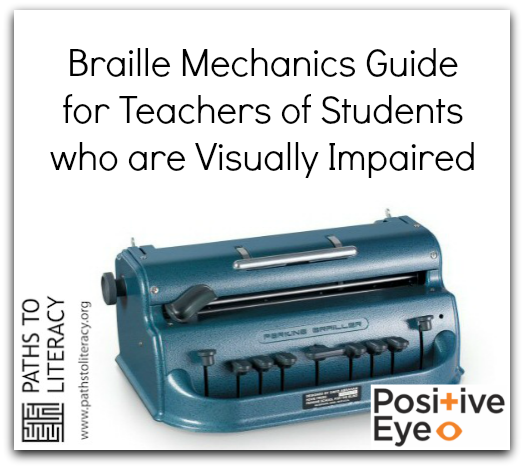
Resource
Braille Mechanics Guidance
Tips on the mechanics of braille, including proper positioning for reading and writing braille.
These tips are offered to provide guidance with proper positioning for reading and writing braille.
Writing Braille (Using a Perkins Braille Writer)
Child should sit in an upright position with back against the chair, both feet flat on the floor, forearms at right angles to the table.
- Use the correct hands and fingers on the correct keys on the Perkins braille machine:
- Left hand for keys 1, 2, 3 (forefinger- key 1, middle finger- key 2, third finger- key 3
- Right hand for keys 4, 5, 6 (forefinger- key 4, middle finger – key 5, third finger – key 6
- One or both thumbs to operate the space bar
- Little finger of the right hand to operate the back spacer(right hand side location)
- Little finger of the left hand to operate the line spacer on the left of the keys to move down a line
- Remove paper from the Perkins braille machine by pressing the line spacer until the paper is released at the bottom
Reading Braille
Optimum hand position for reading braille:
- Braille is perceived through the pressure points within the surface of the finger pads. A very light pressure enables good perception
- Hand position should be such as to make the most efficient use of the pads of the fingers as the reading surface
- Use of both hands together with the thumbs gently touching, with the upper joints of the index fingers in light contact with each other
- Fingers curved comfortably to allow the pads to focus major attention on the upper part of the cell, where the majority of the dots appear, but also to span the entire three-dot depth of the cell
- Fingers should be curved naturally to drop them onto the line of braille and slide quickly and easily from left to right
- The tips of all eight fingers or at least the first three on each hand to rest lightly on the reading line
- As many fingers as possible should be utilised in the reading process although the index fingers or the index and middle fingers on one or both hands are usually the primary reading fingers, other fingers being used to maintain orientation on the Braille line to pick up missed cues, to move ahead and discriminate punctuation or to check and make sure the line is completed
- While the right hand is completing the one line the left hand is moving to the beginning of the next line to continue reading. The two hands then met at some point approaching the middle of the new line
- In moving the left hand to the start of the next line, trace fingers along the space just under the line completed
- Wrists should neither sag nor be humped
Braille Mechanics Checklist



